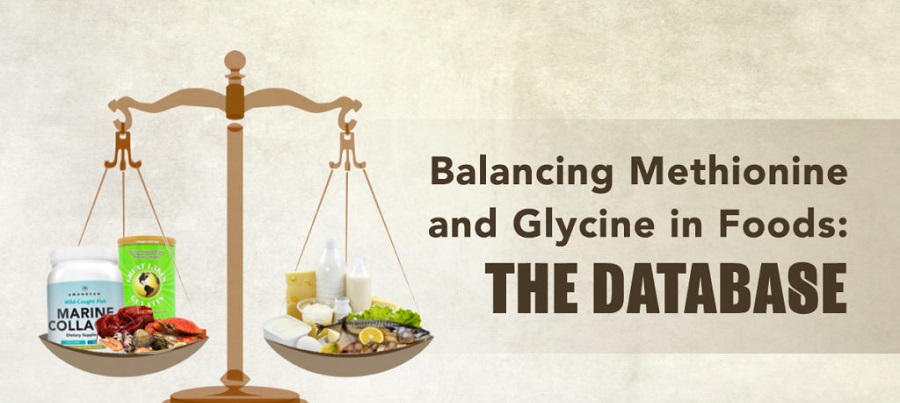Glycine is an amino acid that has the chemical formula NH2-CH2-COOH. It is a small, non-polar molecule with a single amino group (NH2) and a single carboxyl group (COOH). The molecule is composed of a carbon atom (C) that is bonded to two hydrogen atoms (H), an amino group, and a carboxyl group. It is the simplest of the amino acids and it is the only one with no chiral center, meaning it has no stereoisomers. The molecule has a linear structure and it is relatively small, making it highly soluble in water. It is also considered as a non-essential amino acid, which means the body can produce it endogenously.
How is glycine classified as a amino acid?
Glycine is classified as an amino acid because it contains both an amino group (-NH2) and a carboxyl group (-COOH) in its chemical structure. These two groups are the defining characteristics of an amino acid. The amino group, when joined to the carbon atom of the carboxyl group, creates a peptide bond, which is the foundation of protein structure. When amino acids are linked together through peptide bonds, they form peptides and proteins. Additionally, the carboxyl group of glycine can participate in acid-base reactions, which is a typical characteristic of amino acids.
Amino acids are divided into two categories: essential and non-essential. Essential amino acids are those that cannot be synthesized by the body and must be obtained through diet. Non-essential amino acids, like glycine, can be synthesized by the body.
What is the role of glycine in the human body?
Glycine plays several important roles in the human body, including:
-
Protein synthesis: Glycine is one of the 20 amino acids used in the synthesis of proteins. It helps in the formation of collagen, which is an important structural protein found in skin, tendons, and bones.
-
Neurotransmitter: Glycine acts as an inhibitory neurotransmitter in the spinal cord and brainstem, helping to regulate the activity of other neurotransmitters and controlling muscle movement and sensation.
-
Gluconeogenesis: Glycine can participate in the process of gluconeogenesis, which is the production of glucose from non-carbohydrate sources such as amino acids.
-
Detoxification: Glycine is a part of the detoxification process, specifically in the liver. It helps to detoxify harmful substances like drugs and alcohol.
-
Digestion: Glycine is a crucial component of bile, which is a fluid produced by the liver that helps in the digestion of fats.
-
Sleep: Glycine is known to have a calming effect on the nervous system, and studies have shown that taking glycine supplements before bedtime can improve the quality of sleep.
-
Metabolism: Glycine is involved in the metabolism of certain vitamins and minerals such as vitamin B12, folic acid, and heme.
-
Heart health: Glycine may help to lower blood pressure and improve cholesterol levels, which may help to reduce the risk of heart disease.
It's worth noting that more research is needed to fully understand the mechanisms and effects of glycine in the human body.
How is glycine used in protein synthesis?
Protein synthesis is the process by which cells create proteins, which are essential to the structure and function of all living organisms. Glycine is one of the 20 amino acids that are used in the synthesis of proteins, along with other amino acids.
During protein synthesis, the genetic information stored in DNA is transcribed into a molecule of RNA, which then carries the instructions for the sequence of amino acids in a protein. This RNA molecule is called messenger RNA (mRNA).
The mRNA molecule then moves to the ribosomes, which are the site of protein synthesis in cells. The mRNA is read by transfer RNA (tRNA) molecules, which bring the appropriate amino acids to the ribosome. The amino acids are joined together by peptide bonds, creating a chain of amino acids that will fold into a specific protein.
Glycine is among the amino acids that are brought by tRNA to the ribosome, where it will join to other amino acids through peptide bond creating a specific protein. The specific sequence of amino acids in a protein determines its unique three-dimensional structure and function.
It's worth noting that glycine is one of the simpler amino acids which makes it a good building block for more complex proteins.
Can glycine be produced by the human body or must it be obtained through diet?
The human body can produce glycine endogenously, meaning it does not have to be obtained through diet. The body can produce glycine by using other amino acids and intermediates in metabolic pathways. One of the main pathways for glycine synthesis is the serine biosynthesis pathway, which converts serine into glycine. The body also can produce glycine from the breakdown of other molecules such as choline.
However, despite the body's ability to produce glycine, it is still considered a non-essential amino acid because the body can produce enough of it to meet its needs under normal conditions. However, certain conditions such as injury or disease may increase the body's demand for glycine, in which case it may need to be obtained through diet.
Foods that are high in glycine include meat, fish, dairy products, and soy products. It is also available as a dietary supplement in various forms such as capsules and powders. It is considered safe to consume as a supplement, but it's always best to consult with a healthcare professional before starting any dietary supplement regimen.
What foods are high in glycine?
Glycine can be found in a variety of foods, but some of the highest sources include:
-
Meat: Animal meats such as beef, pork, and chicken are high in glycine. Organ meats such as liver and kidney also contain high levels of glycine.
-
Fish: Fish such as halibut, cod, and salmon are also good sources of glycine.
-
Dairy products: Milk, cheese, and yogurt are good sources of glycine.
-
Soy products: Soybeans, tofu, and soy protein are also high in glycine.
-
Eggs: eggs are also a good source of glycine.
-
Legumes: Legumes like beans and lentils also contain glycine.
-
Spinach: Spinach is a leafy green vegetable that contains a moderate amount of glycine.
It's worth noting that the glycine content of foods can vary depending on the specific food and the way it was prepared or processed. Also, while these foods are high in glycine, they are also a source of other essential and non-essential amino acids and should be included as part of a balanced diet.
What is the recommended daily intake of glycine?
There is no official recommended daily intake (RDI) for glycine as it is considered a non-essential amino acid, meaning that the body can produce enough of it to meet its needs under normal conditions. However, some studies suggest that consuming glycine in the range of 3-5 grams per day may be beneficial for certain health conditions such as sleep and skin health.
It's worth noting that, while glycine is considered safe to consume in normal dietary amounts, consuming high doses of glycine supplements may cause side effects such as drowsiness, nausea, and stomach upset. Also, consuming high doses of glycine over a long period of time may have potential negative effects on the body, such as imbalances in other amino acids or even, in some cases, toxicity. If you are considering taking glycine supplements, it's always best to consult with a healthcare professional first.
What are the potential health benefits of consuming glycine?
Glycine has been studied for its potential health benefits in a number of areas, including:
-
Sleep: Glycine has been shown to improve the quality of sleep, making it easier to fall asleep and stay asleep. It works by reducing the activity of certain neurotransmitters in the brain that can cause insomnia.
-
Skin health: Glycine is a major component of collagen, which is a structural protein that helps to keep skin firm and elastic. Consuming glycine can help to promote collagen production and improve the health of the skin.
-
Metabolism: Glycine may help to improve glucose metabolism and reduce the risk of developing diabetes.
-
Heart health: Glycine may help to lower blood pressure and improve cholesterol levels, which may help to reduce the risk of heart disease.
-
Detoxification: Glycine is involved in the detoxification process, specifically in the liver. It helps to detoxify harmful substances like drugs and alcohol.
-
Muscle and joint health: Glycine is also a component of collagen, which is a major component of tendons, ligaments, and cartilage. Consuming glycine may help to promote collagen production and improve the health of the muscles and joints.
-
Cognitive function: Glycine has been studied for its potential effects on cognitive function, and some studies suggest that it may help to improve memory and overall brain function.
It's worth noting that while these potential health benefits have been observed in studies, more research is needed to fully understand the mechanisms and effects of glycine in the human body. Also, it is important to keep in mind that consuming glycine through diet is considered safe, but consuming high doses of glycine supplements may cause side effects and should be done under medical supervision.


